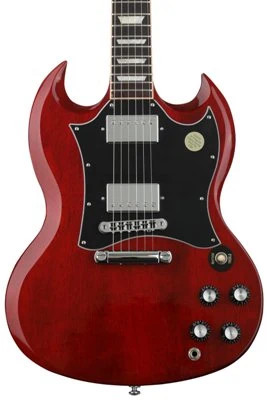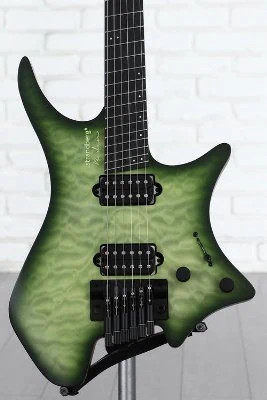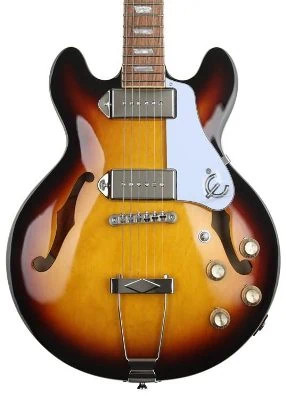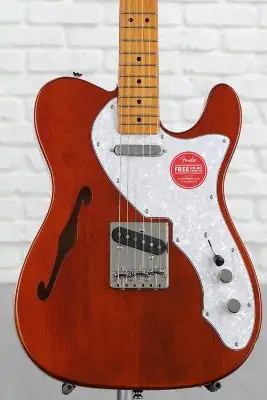Electric guitars, often perceived as sleek and lightweight, can actually pack a surprising heft. Many guitarists, especially those new to the instrument or playing long gigs, quickly discover the strain a heavy guitar can put on their body. From solid wood construction to dense materials, the weight can add up, leading to discomfort and fatigue.
I’ve experienced the spectrum of guitar weights firsthand. Some felt almost weightless, allowing for effortless movement and extended play. Others, however, felt like anchors, digging into my shoulder and causing noticeable strain after just a short time. For musicians playing lengthy sets, the impact of guitar weight is undeniable and can significantly affect performance and enjoyment.
This article dives into the world of lightweight electric guitars. We’ll explore why weight matters, debunk myths about tone and mass, and present a curated list of some of the Lightest Electric Guitars available today. Whether you’re seeking relief from shoulder strain, increased stage mobility, or simply prefer a lighter instrument, you’ll find valuable insights to guide your choice.
| Preview | Product | Price |
|---|---|---|
| Gibson SG Standard | Check Price | |
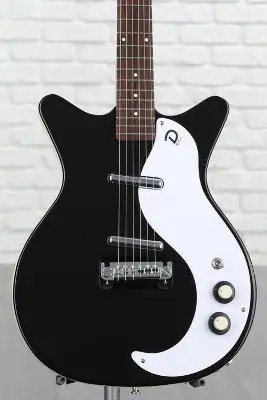 |
Danelectro ‘59M NOS+ | Check Price |
| Strandberg Boden Prog NX 6 | Check Price |
Discover the Top Lightest Electric Guitars Available Now
Table of Contents
1. Gibson SG Standard
The Gibson SG Standard is an icon in the guitar world, famously wielded by rock legends like Angus Young of AC/DC and Tony Iommi, the pioneer of metal. While not the absolute lightest on this list, the SG strikes a fantastic balance between weight, tone, and playability. Weighing in at approximately 6.7 lbs, it’s comfortably lightweight, allowing for hours of play without undue strain, yet substantial enough to deliver a powerful sound.
The SG’s sonic versatility is remarkable. It excels at capturing that classic vintage rock tone, but it’s equally capable of handling heavier genres, a testament to its adaptability demonstrated by metal’s founding father, Tony Iommi. Its punchy, raw sound is complemented by a responsive “snappy” quality, providing excellent control and articulation.
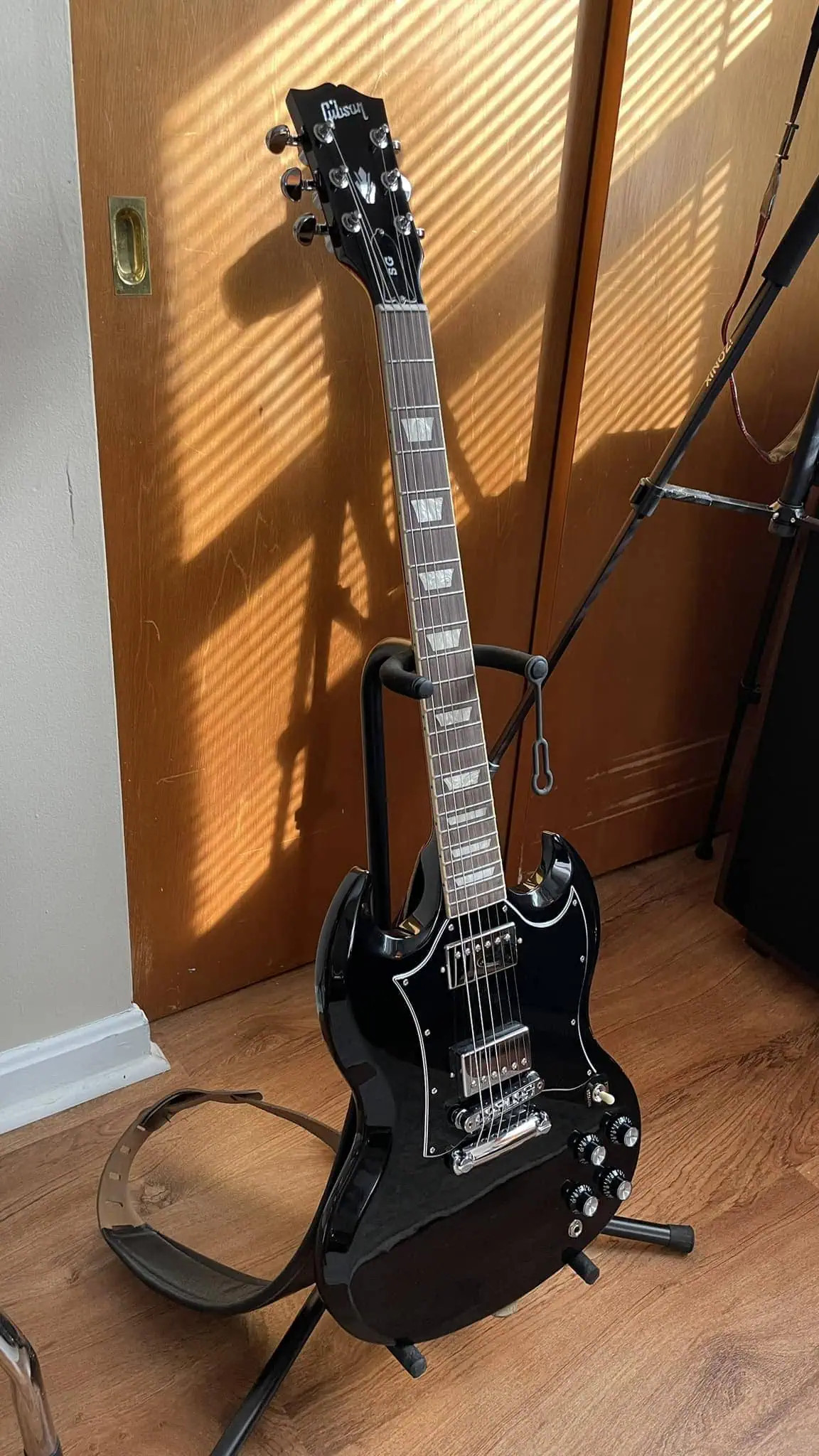
Gibson SG Standard Ebony, highlighting its smooth finish and lightweight design.
The independent volume and tone controls for each pickup are a significant advantage, offering extensive tonal shaping possibilities. This is particularly beneficial when using both pickups simultaneously, allowing you to precisely blend their individual characteristics to achieve your ideal sound. Whether you prefer distinct settings for each pickup or a perfectly balanced combination, the SG provides the flexibility you need.
Though it performs admirably with clean settings, the SG truly shines when driven with distortion. It produces a surprisingly thick and full sound for a guitar of its size and weight, defying expectations and delivering a robust sonic presence.
As a genuine Gibson, the SG Standard represents a higher-end investment, making it more suitable for intermediate to advanced players seeking a professional-grade instrument. However, the price reflects the exceptional sound quality and meticulous craftsmanship Gibson is known for. For those seeking a more budget-friendly option with similar characteristics, the Epiphone SG offers a compelling alternative at a fraction of the cost, maintaining tonal similarities and comparable weight.
2. Danelectro ‘59M NOS+
While perhaps less ubiquitous than Fender or Gibson, Danelectro has a rich history of guitar manufacturing, nearly as long as those iconic brands. The Danelectro ’59M NOS+ stands as a superb modern iteration of their classic models, blending vintage aesthetics with contemporary construction. Its weight, approximately 6.7 lbs, aligns with the other lightweight contenders on this list, ensuring comfortable playability.
The ’59M NOS+ possesses a distinctive sonic character, often described as residing in the tonal space between a Stratocaster and a Les Paul. It offers a unique blend, less bright than a Strat and less aggressive than a Les Paul, leaning towards an alternative, slightly grungy vibe.
The retro-inspired Danelectro ’59M NOS+ showcasing its unique body shape and vintage aesthetic.
The clean tone is equally intriguing – almost neutral, neither overly bright nor warm. This neutrality makes it exceptionally versatile for accompaniment, ideal for filling out a band’s sonic texture or providing subtle support to vocals.
The ’59M NOS+ truly excels with both pickups engaged. This middle position unlocks a sweet spot, delivering a full and vibrant tone reminiscent of the “quack” from a Stratocaster’s middle position, but with enhanced body and depth.
The design of the ’59M NOS+ is undeniably captivating, exuding a retro charm that evokes images of surf rock and vintage cool. However, one minor drawback is the cutaway, which can make accessing the highest frets (beyond the 21st) a bit challenging for some players.
3. Strandberg Boden Prog NX 6
Strandberg, a relatively newer brand, has rapidly gained recognition among guitarists for its innovative designs, particularly its compact bodies and headstockless configurations. The Boden Prog NX 6 represents the latest evolution of their flagship Boden series, refining an already successful formula.
Strandberg guitars are designed for portability and resilience. Their compact form factor minimizes potential damage during transport, and their remarkably light weight is a standout feature. The NX 6 I tested weighed a mere 4.5 lbs, making it one of the lightest electric guitars I’ve ever encountered, and likely among the lightest available in the solid-body category.
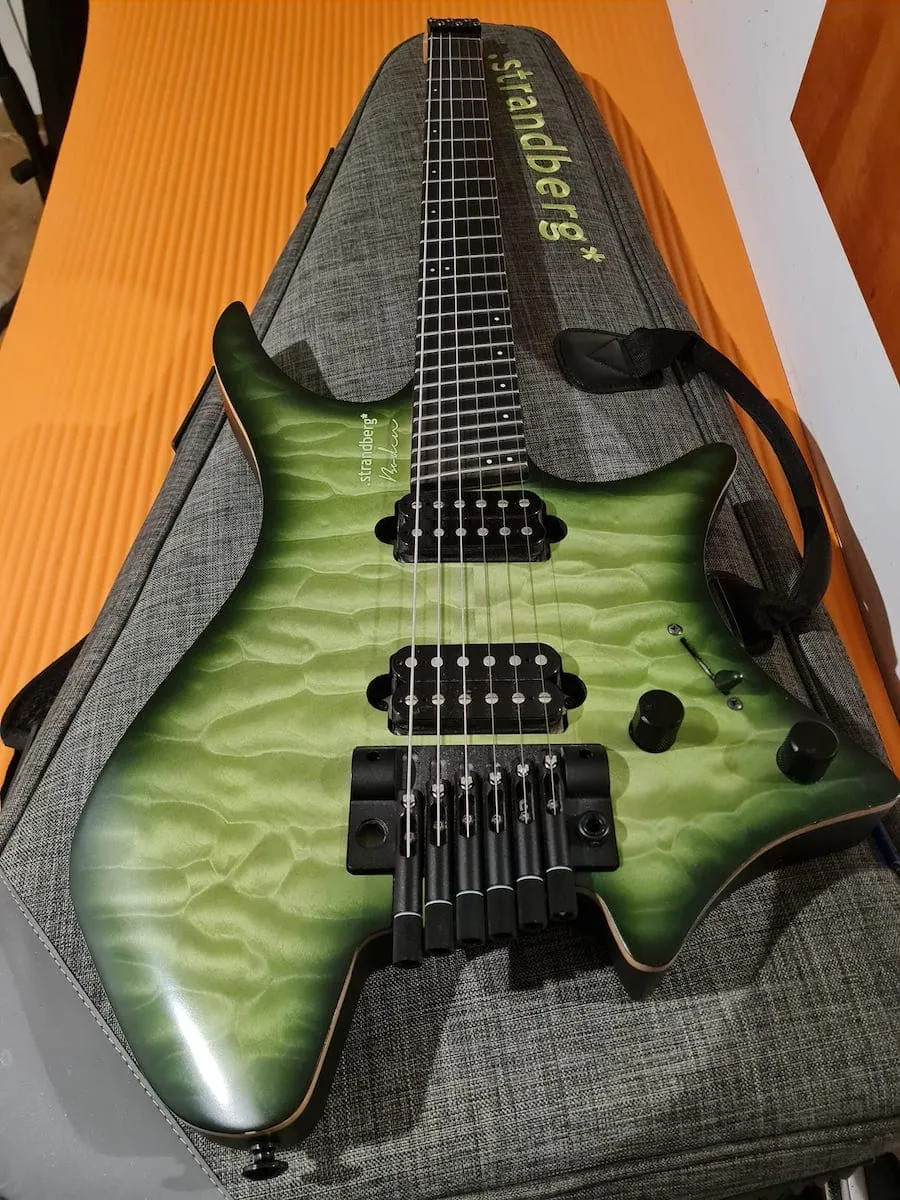
The ultra-light Strandberg Boden Prog NX 6, showcasing its ergonomic body and headstock-less design.
Despite its diminutive size and weight, the NX 6 is sonically impressive. Strandberg guitars are known for delivering surprisingly full and versatile tones. The NX 6 is no exception, offering warm and vibrant clean tones and effortlessly handling high-gain distortion. It’s a true chameleon, adaptable to virtually any musical genre or playing style.
The unique design of Strandberg guitars, while innovative, does require a brief adjustment period. While your playing technique and posture remain unchanged, the absence of a headstock and the truncated body shape are visual and tactile differences that might take a little getting used to.
However, the NX 6’s price point is one aspect that is not “small.” It is the most expensive guitar on this list, reflecting its premium build quality, innovative design, and exceptional performance. While it represents a significant investment, it delivers an unparalleled playing experience that justifies the cost for serious musicians.
4. Epiphone Casino Coupe
The Epiphone Casino’s legacy is cemented by its association with iconic musicians like John Lennon, who frequently used it as his main guitar. This alone speaks volumes about its quality and tone. The Epiphone Casino Coupe is a modern, more accessible version of this legendary instrument, offering classic tones at a more affordable price. It’s an ideal choice for players seeking a lightweight guitar for classic rock, jazz, and blues styles.
The Casino Coupe is indeed lightweight, typically weighing under 6 lbs. This makes it exceptionally comfortable for extended playing sessions, particularly when standing.
The vibrant red Epiphone Casino Coupe, highlighting its semi-hollow body and classic design.
Sonically, the Casino Coupe delivers a sweet, warm, and bluesy tone, especially from the neck pickup. The bridge pickup offers a brighter, more jangly character suitable for lead work. The smaller body provides a feel reminiscent of a Les Paul, while the double cutaways enhance upper fret access.
Equipped with P90 pickups, the Casino Coupe is surprisingly capable of handling higher gain levels. Pushing the gain reveals a pleasing growl, adding versatility beyond its classic clean tones.
The Casino Coupe’s design stays true to the original Casino, retaining its vintage aesthetic with a raised pickguard and traditional bridge and tailpiece. While the vintage bridge design contributes to its classic look, it lacks adjustability for action height. However, the playability remains excellent overall.
A notable improvement in the Coupe version is the slimmer body profile compared to the original Casino. This enhances player comfort, addressing the original model’s perceived bulkiness, and further reduces weight. The Epiphone Casino Coupe is a superb guitar that successfully captures the essence of the original Casino in a more player-friendly and lightweight package.
5. Squier Classic Vibe ‘60s Tele Thinline
View on Sweetwater | View on Amazon
The Telecaster, another iconic guitar design, is celebrated for its exceptional sound and playability. The Squier Classic Vibe ‘60s Tele Thinline may bear the Squier name, but it delivers a playing experience and tone remarkably close to its Fender counterpart, but at a significantly more accessible price. Squier has clearly prioritized quality in the Classic Vibe series.
In terms of feel and playability, the Squier Classic Vibe ‘60s Tele Thinline is virtually indistinguishable from a Fender Telecaster. Many players would be hard-pressed to discern a difference without a side-by-side comparison. Being the Thinline version, it’s inherently lightweight, typically coming in under 7 lbs.
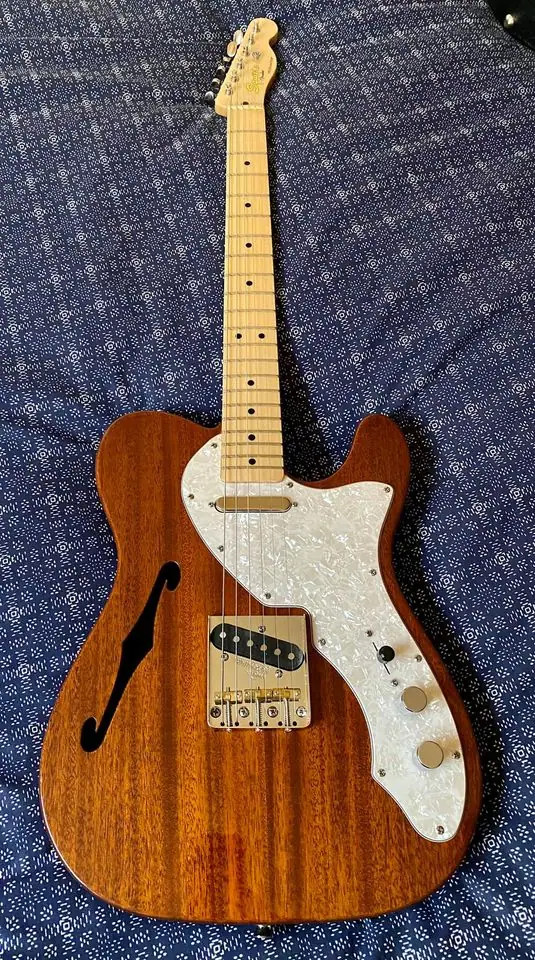
The Squier Classic Vibe ’60s Tele Thinline in natural finish, showcasing its semi-hollow body construction.
As a semi-hollowbody guitar, the Thinline Telecaster possesses a unique sonic character compared to a standard solid-body Tele. While retaining the Telecaster’s characteristic brightness, the Thinline exhibits a more prominent low-end response, resulting in a rounder and fuller sound. This sonic profile lends itself beautifully to clean tones, producing a smooth and somewhat warm character.
It also performs well with light gain, though pushing the distortion too far might not be its ideal application. It excels in blues, jazz, and lighter rock genres, offering a bluesier tone compared to the more country-leaning sound of a standard Telecaster. The Squier Classic Vibe ‘60s Tele Thinline is an outstanding choice for players seeking a lightweight, versatile guitar with classic Telecaster aesthetics and tones, without the premium price tag.
6. Ibanez Ichika Signature
Ichika Nito, the YouTube guitar prodigy, is a leading figure in modern guitar innovation. His exceptional technique, distinctive playing style, and captivating tone have garnered him a global following. Mirroring Nito’s ethereal sound is his signature Ibanez model, designed in collaboration with the renowned Japanese guitar manufacturer.
Constructed with a nyatoh body and a maple/bubinga neck, this guitar achieves an astonishingly light weight of around 5 pounds, with some individual instruments weighing even less. Upon picking it up, the immediate impression is one of near weightlessness. For players accustomed to heavier guitars like Les Pauls, the featherlight feel of the Ichika Signature is truly remarkable for a solid-body electric guitar.
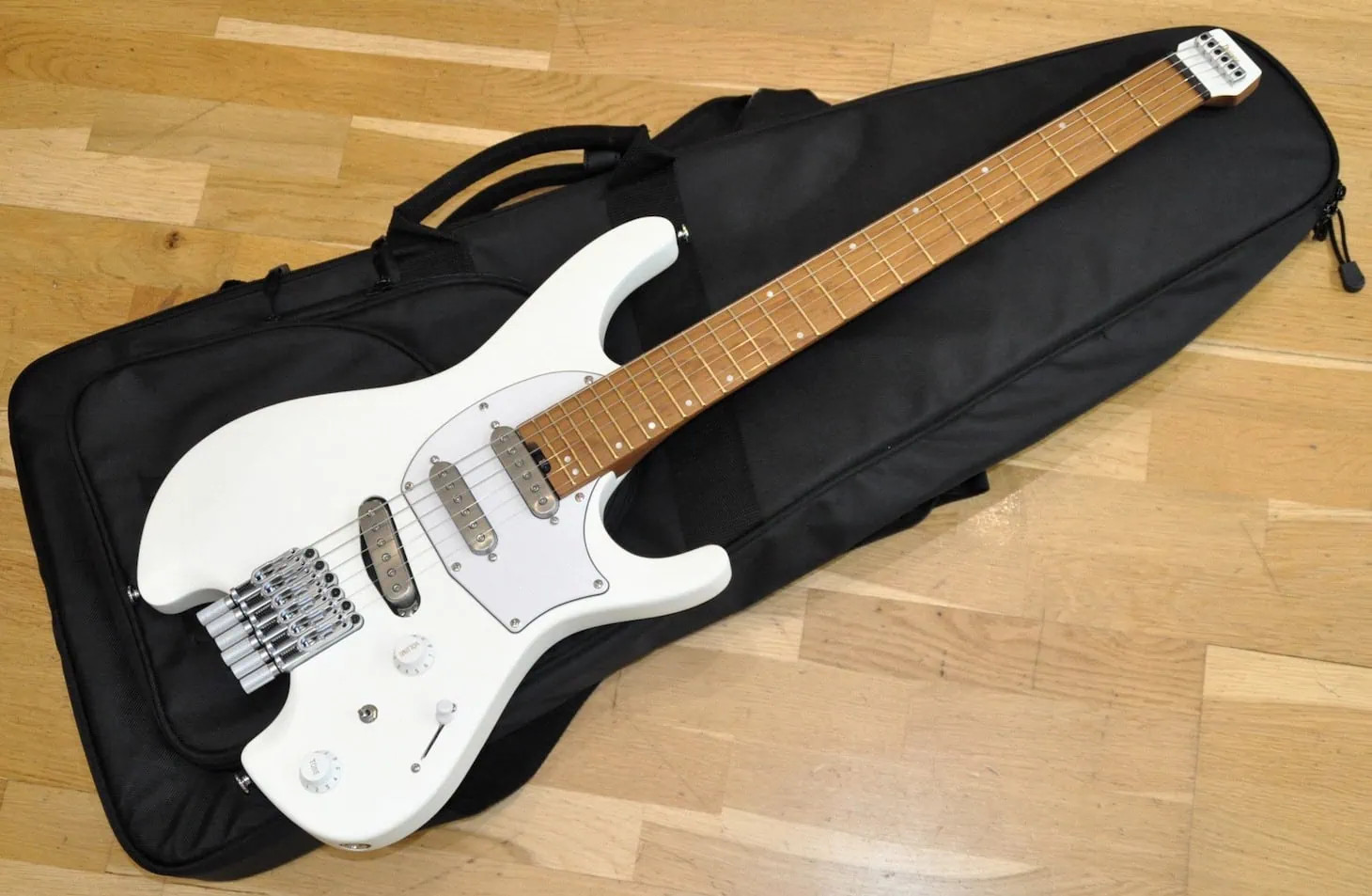
The incredibly lightweight Ibanez Ichika Signature model, showcasing its minimalist aesthetic and comfortable body contours.
The guitar’s super-slim neck profile and ergonomically contoured body are clearly designed for high-performance playing. While it might feel somewhat unconventional for traditional rock styles, it excels in modern, progressive genres, particularly when incorporating techniques like tapping and complex fingerstyle arrangements, reminiscent of Nito’s signature style and artists like Polyphia.
Sonically, the Ichika Signature is exceptional. The single-coil pickups deliver clear and crisp tones across all positions. Even with heavy compression, the guitar retains its sparkle and warmth, avoiding excessive twanginess. Tapped harmonics ring out clearly, and the tall (though not quite jumbo) frets facilitate effortless execution of techniques like tapped hammer-ons, which can be more challenging on other guitars. The gold frets against the roasted maple neck further enhance the guitar’s luxurious feel and visual appeal.
7. Epiphone Les Paul Muse
Including a Les Paul on a list of lightest electric guitars might seem counterintuitive, given their reputation for substantial weight. However, Epiphone has cleverly addressed this with the Les Paul Muse, designed specifically for players who desire the classic Les Paul tone in a lighter instrument.
The Les Paul Muse weighs in at around 7 pounds, significantly lighter than traditional Les Pauls, yet still substantial enough to feel like a quality instrument. It achieves a remarkable balance, offering the essence of Les Paul tone in a weight that is comparable to a typical housecat, a weight most wouldn’t consider burdensome.
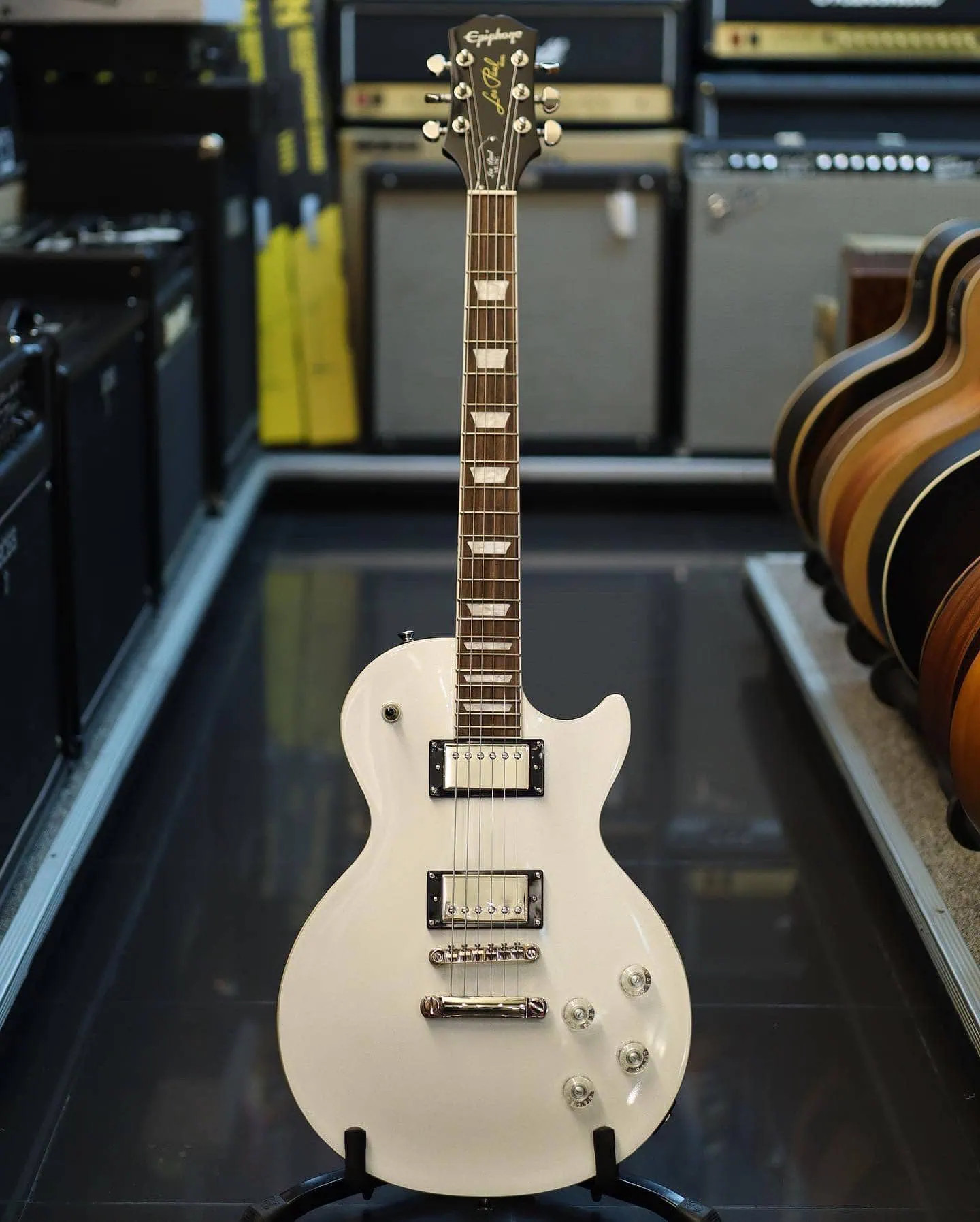
The Epiphone Les Paul Muse in a music store, demonstrating its classic Les Paul shape with a lighter construction.
The key to its reduced weight is the chambered okoume body, which is so extensively chambered that it approaches a hollowbody construction. This chambering does influence the tone, imparting a subtle airiness and sweetness reminiscent of a Gibson ES-335, a characteristic that many players find appealing. The contoured body also enhances playing comfort, both standing and seated, retaining the Les Paul’s comfortable feel in a seated position.
Equipped with Alnico humbucker pickups, the Les Paul Muse delivers the quintessential Les Paul sound. It produces a powerful growl when driven and a warm, chiming clean tone. With nuanced playing, it can even evoke tones reminiscent of BB King’s signature sound, showcasing its versatility across blues and rock styles.
8. PRS SE Hollowbody II Piezo
PRS guitars are highly regarded for their quality craftsmanship and versatility, favored by guitarists across diverse genres. The PRS SE Hollowbody II Piezo is designed as a more accessible version of their core range, maintaining PRS quality at a more attainable price point.
Despite being a hollowbody guitar, the SE Hollowbody II Piezo is not significantly lighter than other guitars on this list, weighing just under 7 lbs. This is due to the mahogany construction of both the body and neck, which are denser woods.

Close-up of the PRS SE Hollowbody II Piezo, highlighting its stunning finish and meticulous craftsmanship.
Being a hollowbody, the SE Hollowbody II Piezo excels in delivering exceptional clean tones. The overall tone is full and rounded, and the hollow construction enhances resonance, amplifying the guitar’s sonic presence. Combined with the piezo pickups, the clean tones are truly outstanding, approaching an acoustic-like quality.
Surprisingly, the PRS SE Hollowbody II Piezo also performs remarkably well with distortion. Solid-body PRS guitars are renowned for their high-gain capabilities, and the hollowbody version is surprisingly on par. PRS has successfully created a true all-rounder, capable of handling genres from jazz to hard rock with equal aplomb. Playability is, as expected from PRS, smooth and effortless. The bridge is also easily adjustable, a practical feature for fine-tuning setup preferences.
Understanding Electric Guitar Weight
The typical electric guitar weighs around 8 lbs on average. Heavier examples, like my 1990 Gibson Les Paul Standard, can reach 11 pounds or more. Some vintage instruments are even heavier, occasionally exceeding 14 or 15 pounds. Most guitarists consider an electric guitar “lightweight” if it weighs 7 pounds or less. Within the lightweight category, some models, like the Strandberg NX6 mentioned earlier, can be exceptionally light, dipping down to 4 to 4.5 lbs.
Travel guitars, such as the Traveler Ultra-Light, can weigh even less, under 3 lbs. However, these are primarily designed for portability and practice, rather than performance-level playing.
Body Type and Weight: What Matters Most?
Contrary to common assumptions, body type isn’t the sole determinant of guitar weight. While hollowbodies are generally lighter than solid bodies, the Strandberg NX6 demonstrates that solid-body guitars can also be incredibly lightweight.
My Top Pick
The Strandberg NX6 stands out as the lightest solid-body electric guitar I’ve ever played. Its lightweight and compact design, combined with an exceptionally playable neck, make it a top choice for comfort and performance.
The primary factor influencing guitar weight is the type of wood used in its construction. Woods like rosewood are among the heaviest used in guitar making, while basswood is one of the lightest. Consequently, a rosewood guitar will naturally be heavier than one crafted from basswood. The overall size of the guitar, including the body, neck, and headstock, also contributes to weight – larger instruments require more material and thus weigh more.
Debunking the Myth: Does Lighter Weight Mean Worse Tone?
Fortunately, the weight of an electric guitar has minimal impact on its tone, particularly in amplified settings. A lightweight guitar equipped with the right pickups can sound just as powerful and full as a much heavier instrument. Since electric guitars are typically played through amplifiers, the nuances of body weight are less sonically significant than factors like pickups, wood resonance (to a degree), and amplification.
Bruce Springsteen famously lightened his Telecaster by carving out wood from its body cavities, reportedly reducing its weight to around 5-7 pounds. Despite this significant weight reduction, “The Boss” is never criticized for lacking a robust or powerful guitar tone, proving that weight is not a critical factor in achieving great electric guitar sound.
While tone is not inherently diminished by lighter weight, some guitarists believe that guitar weight influences the playing experience, which can indirectly affect tone. Personal preference plays a significant role. Some players, including myself, prefer heavier guitars, finding the substantial feel of a Les Paul on the strap to be conducive to their playing style and comfort. Conversely, artists like Bruce Springsteen prefer lighter, more comfortable instruments.
Ultimately, if a lighter guitar enhances your playing comfort and allows you to perform more freely and expressively, then it will arguably sound “better” for you than a heavier guitar that feels cumbersome. In essence, when it comes to tone, factors beyond weight are far more influential in shaping the final sound of an electric guitar.
Advantages of Playing a Light Electric Guitar
Lightweight guitars offer several benefits, particularly in specific situations. One key advantage is for younger players. A heavy guitar can be uncomfortable and unwieldy for children or smaller individuals, potentially hindering their learning and enjoyment. The weight can cause balance issues while standing or neck dive, making playing more challenging.
Another significant advantage is for players with back problems or those seeking to prevent them. Playing a heavy guitar for extended periods can exacerbate existing back issues or contribute to developing new ones. Lightweight guitars can alleviate strain and promote better posture, especially for musicians who perform frequently or practice standing for long durations.
The ease of transport is another practical benefit of lighter guitars. While not always a primary concern, a lighter instrument is simply easier to carry to and from gigs, rehearsals, or lessons. This becomes particularly relevant for touring musicians or those who frequently travel with their guitars.
However, guitar weight preference is highly subjective. Personal stature doesn’t dictate the ideal guitar weight. Randy Rhoads, despite his smaller build (5’7″ and 105 lbs), famously played a full-weight Les Paul Custom. Ultimately, the “best” guitar weight is the one that feels most comfortable and allows you to play your best. This list provides excellent options for players prioritizing lightweight comfort without compromising tone or quality.
Final Thoughts
Lightweight electric guitars are a fantastic option for many players. They offer enhanced comfort without sacrificing tonal quality. You no longer need to endure the strain of a heavy guitar to achieve great sound and playability. Whether you prioritize comfort, mobility, or simply prefer a lighter instrument, the guitars on this list demonstrate that lightweight design and excellent performance can go hand in hand.

